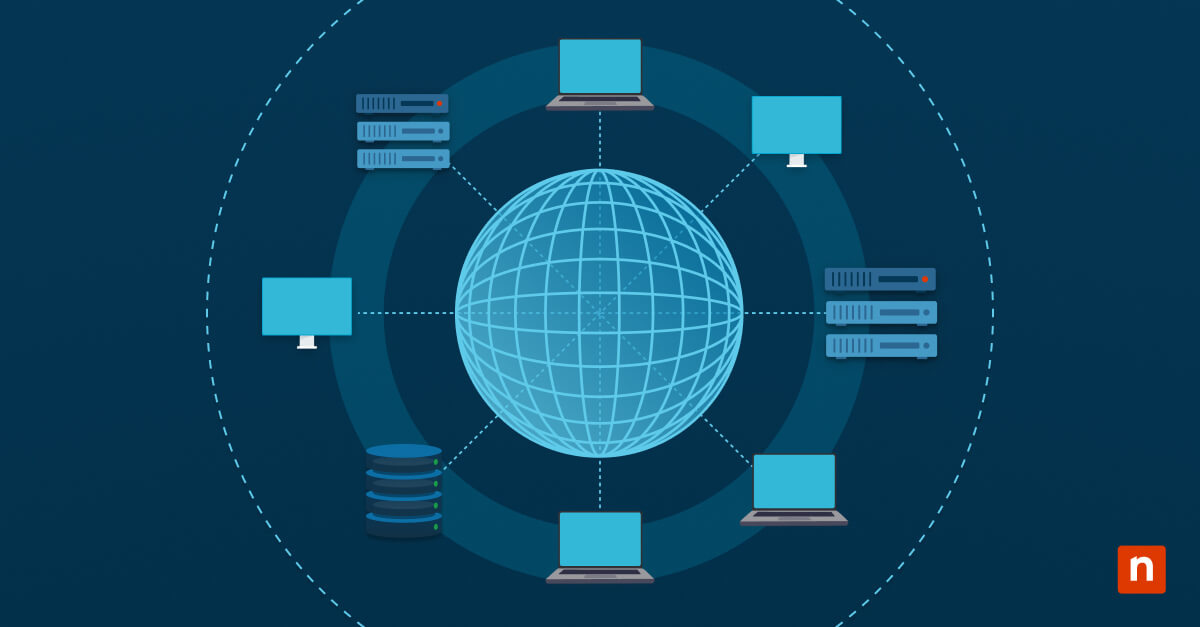When IT teams and departments aren’t on the same page, they unintentionally create blockers and other issues that negatively affect the entire organization. To prevent these troublesome issues from occurring, CIO recommends looking into a few ways to make IT operations more efficient, such as automating processes or adopting a new IT approach.
Recently, many successful organizations have chosen to adopt the unified IT management (UITO) approach, which minimizes risks, improves collaboration, and increases productivity. Consider the following information about UITO to see if it’s the right approach for your IT team.
Understanding unified IT operations management (UITO)
Unified IT operations (UITO) is an approach to IT that unifies an entire IT environment under the goal of increasing business growth by preventing, negating, and resolving end users’ concerns. It also focuses on reducing interpersonal, technological, and operational silos within the IT teams themselves to boost productivity and collaboration. Essentially, it takes traditional IT operations management (ITOM) to a whole new level.
Functions included within UITO
In order for a unified IT management approach to be effective, it must ensure that all aspects of IT management work together, such as network and infrastructure management, security, applications management, service management, and systems administration. All of these functions work in harmony under UITO to create a successful IT environment that directly contributes to an organization.
5 ways unified IT management benefits businesses
After implementing a UITO framework, an organization’s IT team will step up to a whole new level. A UITO solution will:
1) Reduce complexity
With a successful UITO system in place, an IT team can reduce the complexity of managing multiple tools by bringing them together on a single pane of glass. This also increases efficiency because IT teams no longer have the need to constantly switch between tools and attempt to manage everything separately.
2) Align IT with organizational goals
By unifying IT processes and focusing on end-user outcomes, an IT team can work with an organization to achieve business goals rather than operating as a separate department. In this manner, an IT team becomes a direct, significant contributor to a business.
3) Increase productivity
When an IT department is operating in an inefficient manner, productivity decreases. For example, if a technician has to manage ten or fifteen different tools separately, it will require much more effort than combining certain tools and managing everything from one monitor. In this manner, a UITO system improves efficiency by bringing IT operations together, thus increasing productivity by allowing an IT team to focus on a single monitor instead of dividing their attention and managing multiple tools at once.
4) Save resources
The most successful businesses are the ones that know how to manage their assets and resources wisely. Without a UITO framework, an IT team functions in a scattered, unorganized manner that drains time, money, and other essential resources. A UITO framework streamlines IT processes by consolidating and organizing IT systems, which ensures that time and other resources used by an IT team are spent efficiently.
5) Provide support for teams
By the end of 2022, Linkedin’s remote workforce statistics predict that 25% of all North American jobs will be remote. As the remote workforce increases, organizations require tools and solutions that will support both hybrid and remote teams. A UITO system centralizes all tools into one and often utilizes the cloud so that on-site and remote teams can easily access the tools they require.
4 key steps to build a UITO framework
There’s no doubt that transitioning from one IT framework to another will take some time. However, there are four steps you can follow that build the key components of a UITO framework to make the transition as fast and seamless as possible.
Step 1: Consolidate IT operations
IT tools certainly come in handy, but using too many different tools for various tasks is an inefficient way to manage your IT infrastructure. The first step to building a more unified IT environment is to consolidate the tools and centralize IT operations.
Step 2: Automate processes
There are multiple benefits of IT automation that organizations can take advantage of, such as improving accuracy, reducing costs, and boosting efficiency. By automating processes, an IT team can standardize processes to make them easier and more streamlined.
Step 3: Maximize resource value
Unfortunately, IT teams are usually a little behind on resources as organizations grow, so they often become understaffed and overworked. To help ease this burden, IT teams leverage the resources they have wisely to maximize their value. For example, spending resources on an IT tool that’s intuitive and easy to use will require fewer resources than an IT tool that has a large learning curve.
Step 4: Build a distributed workforce
Since the remote workforce continues to grow, a solid UITO framework must incorporate tools and processes that will adapt for both on-premise and remote team members. Switching to cloud-based solutions is a great way to set up for a hybrid or distributed workforce.
Unify your IT operations with NinjaOne
To create a UITO framework, you need a unified solution. NinjaOne offers RMM, patch management, remote access, endpoint management, IT documentation, IT asset management, backup, service desk tools, and more all neatly tied together in one complete solution. Start your free trial to begin building a more unified and successful IT environment.








